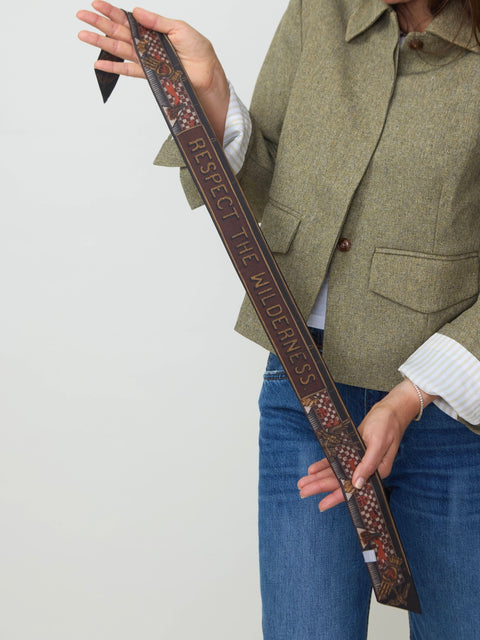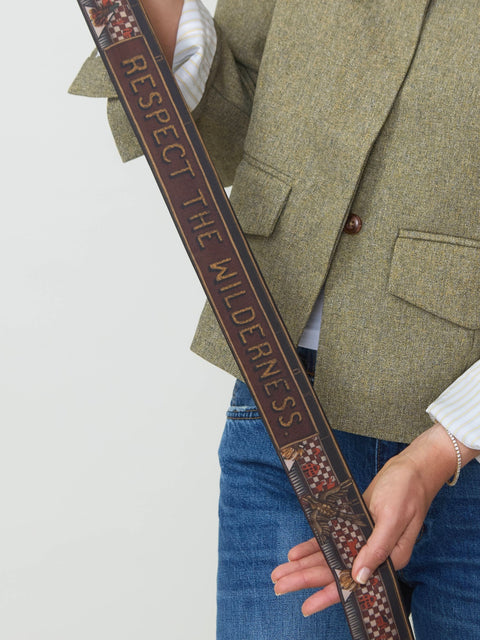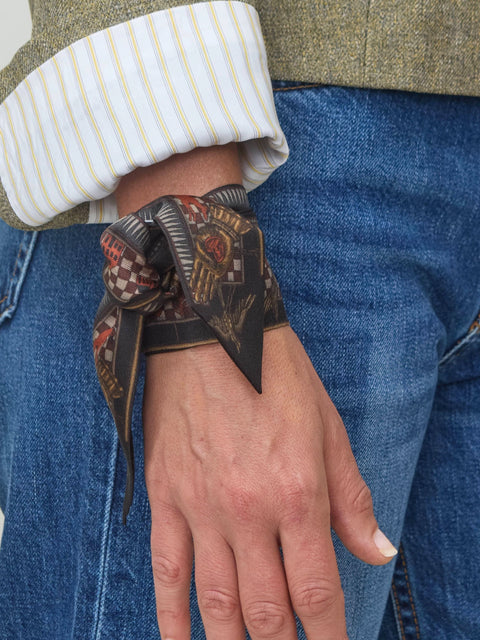



Secrets of the Bison, small silk ribbon, saguine
Sabina Savage’s Wild Americana collection looks to the secret symbolism of nature, as seen through the sketchbook of a traveling naturalist. This collection is an informal sequel to her previous collection, The Naturalist’s Handbook. True to form, Savage’s imagination is the catapult for a rich storytelling process. Her fictional naturalist returns, this time making his way across America where he is influenced by the people that take him in: The Lakota people, Fraternal societies, the Cherokee people and the sailors of Nantucket. This collection reflects an intersection of the science of naturalism and the symbols and stories of those mentioned above. Spirituality, science and nature come together from their own corner to bring us to common ground that Savage hopes we will agree upon.
“My collection recruits these creatures as powerful symbols, standing for faith in nature, hopeful resilience, and issuing a plea for kinship and charity in preserving our natural world.” - Sabina Savage
100% silk, measuring 5cm x 95cm (appr. 2in x 37in), dry clean only.
Every Sabina Savage design is hand illustrated, telling the story of the collection through the composition and details. The scarves are drawn in full, and the four corners of each scarf hold individual elements, ensuring the wearer will display a different feature however the scarf is folded. Each illustration takes around six weeks to complete.
Secrets of the Bison
3rd October, 1876: “As a breeze glides across the wide open planes, a lone bison stands in the silence. Glossy cowbirds have settled upon his back, and while usually lively, they now rest calm and quiet. The delicate prairie grass dances at the bison’s feet, and he paws the ground gently, just once. His longing eyes raise to meet mine for a second, before his gaze drops to the earth once more. The bison’s mind contains a wisdom, kindness and nobility I will never apprehend. ‘The poetry of the earth is never dead’, John Keats.’ - A.S.
This design draws inspiration from a wide range of sources, starting with the dioramas at the American Museum of Natural History. The American Bison was decimated from 60 million to just 541 in 1889 in an attempt to subjugate the Native American people. The last bison in Oklahoma county was killed in 1876, a date noted in the design. The design references American Folk Art objects and many symbols and signs from fraternal societies (which have been reworked and repurposed to serve as objects of reverence toward nature. The beehive flag symbolizes the need to work together to protect the natural world, the tent flag symbolizes the protection we must offer all species and the two pillars represent the strength & stability required to do so.


